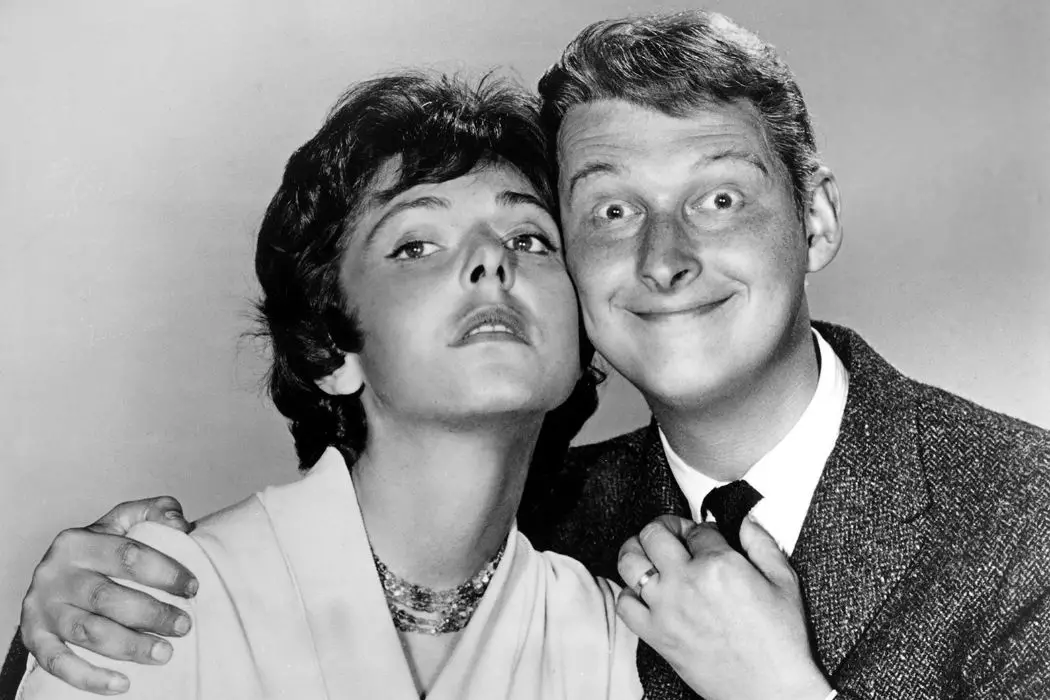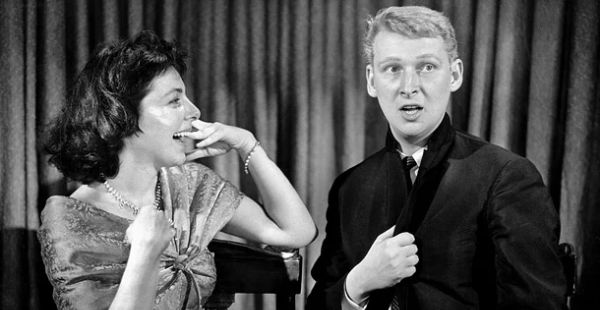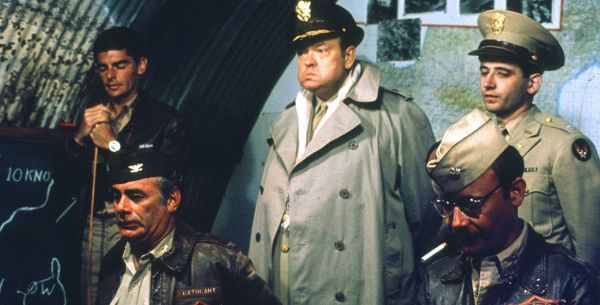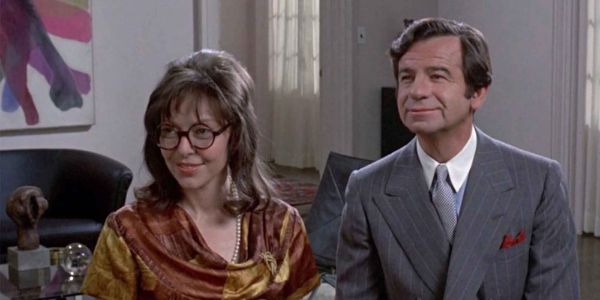NICHOLS AND MAY: INTERVIEWS (Conversations with Filmmakers Book Series)

Tynan loves nagging all his friends to watch classic movies…
If you’re like me, you know Mike Nichols through his affiliation with The Graduate or Who’s Afraid of Virginia Woolf. Maybe you have some notion of the Nichols and May improv team that conquered the comedy circuit in the 1960s. Perhaps you’re aware of Elaine May‘s own forays into writing-directing with the likes of A New Leaf and The Heartbreak Kid. For some, it’s all of the above.
Nichols and May: Interviews provides what feels like an unprecedented opportunity to make sense of Mike Nichols and Elaine May in their own words. Rather than an in-depth biography of two comedic greats, we get all these varying pieces and tidbits spanning the decades, moods, and movements of their careers from beginning to end.
It’s no small feat nor is it easy to categorize an individual (much less two people as incomparable as May and Nichols) down to a simple essence. Thankfully, it doesn’t try.
Instead, the primary documents are at our fingertips to read and make sense of on our own, through early profiles, fireside chats, and later career retrospectives. They are the closest things we have to primary sources aside from the films and sketches themselves. Although there are observations and opinions framed through the prism of other people, the common denominators are always May and Nichols.
Thoughts on Nichols & May
We are introduced to the high water marks, the lulls, inanities, and more than a few failures. As they have a habit of doing, careers wax and wane to their own individual rhythms. Even as their trajectories diverged, May and Nichols always have a knack for falling back together, and it’s a pleasure to leave them in fits and giggles that encapsulate their undying camaraderie from a lifetime working together.
This shared context is key. They both shot to the pinnacle at an early age. Nichols soon became the talk of Hollywood, hit some slumps, and ultimately endured as a deeply-respected, if generally underappreciated, director, well into the 21st century.
May‘s career was all the more serpentine going from their early successes to mythical failures, whether real or imagined. It seems like she needed fresh critical eyes and retrospective evaluation to rekindle an appreciation for her reputation as both an unassuming trailblazer and creative genius.
Nichols‘ interviews usually feel more straight-forward as he’s an accommodating subject, insightful, and whip-smart. His career isn’t necessarily easy to pigeon-hole, but his successes make sense. May, on the other hand, often feels evasive although her obfuscations and deflections hardly feel like an attack on her interviewers and more so a reflection of her own immaculately individual personality. Her genius was often less-appreciated or at least less lucrative at the box office for whatever reason, though she was given the keys to the kingdom on several occasions with varying results.

Numerous stories get rehashed and reinforced over various interviews such that the reader begins to pick up on the rhythms and repetitions amid each new revelation. Their fateful meeting in the Illinois Central railway station, playing spies and bouncing off each other with their wit and budding improv skills, feels very much an inciting incident in this story, and it’s one of the stories that gets alluded to so often, by the end, it almost feels like a hallowed legend.
On Filmmaking
Part of the fascination with this compendium comes with situating Nichols and May in the context of the contemporary culture because very often their peers and the prevailing zeitgeist of the times played into both their successes and the failures too.
Neil Simon and Richard Burton were two men quick to sing Nichols’ praise early on as a director. He, of course, brought to life several of Simon’s most noted works on stage like Barefoot in The Park and The Odd Couple. He would also make his film directorial debut with Liz Taylor and Burton in Who’s Afraid of Virginia Woolf?
In one article about Nichols, Orson Welles is quoted as saying “Nobody’s in his league with actors,” which sounds quite complimentary coming from the larger-than-life wunderkind behind Citizen Kane. Their relationship was mostly forged on the set of Catch 22, and Nichols did well to cast Welles in a part that somehow played off his own persona and the uneasiness he engendered from cast and crew alike.
How does one go about directing the director of what some consider the greatest movie of all time? This is part of the dialogue Nichols contends with and being a self-effacing personality, he lauds Welles’ genius while downplaying his own. It’s true that while Welles was beloved on the festival circuit, Nichols was blessed with the commercial success his predecessor rarely received. In a subsequent comment, Nichols ruminates a bit more on an explanation of his directorial process:
I’d read Orson Welles saying “ you can learn all the technical aspects of movies in one day ”— which is not quite true, but you can learn a great deal about lenses and dollies and montage and so forth, and of course, you’ ve been learning about all that seeing movies all your life. I think you can actually see me learning on the set of Who’s Afraid of Virginia Woolf.
Once more you have the humility of Nichols on display as well as his intelligence. Because he proved himself adept as a director early on in his career, such that he was able to guide actors to some of their most iconic performances and maintain an unparalleled career, straddling both stage and screen. Even today he feels like a bit of an enigma.

If we put this in relief with Elaine May‘s own explanations about becoming a director for the first time on the set of A New Leaf, it provides some context on how she learned and approached the craft.
I had watched this director who was so panic-stricken that they had to take him out of the bathroom just before a take. Literally. And I decided then that I wouldn’ t do that, and that if I just wasn’ t too cowardly to say, “ Well, I don’ t know,” then I’ d be all right. The first movie, they thought I was insane. The second movie, after the first movie made money, they thought I had my way. “ She has her special way.” They always think you really know. They figure, she knows. But you really don’ t. I’ m sure that John Ford knew. I mean, there’ s twenty-five possible setups, and he did them all. I find that’ s an enormously helpful thing to cling to: I don’ t know.
Here May, rather like Nichols, acknowledges a great directorial talent while admitting her own limitations. However, it shows a degree of honesty that’s refreshing.
It’s true that the details of her later project Mikey and Nicky alone feel like fodder enough for a madcap comedy assembled out of the scraps of Hollywood lore with May cast as the mad scientist feuding with the studio over the dismemberment of her prized Frankenstein. A recent Criterion release will hopefully provide the film a second life outside the bounds of news stories.
The same might be said about Ishtar, her Reagan-era Road Picture, dubbed a monumental flop practically before it ever got released in theaters. Its troubled production is perhaps second only to Heaven’s Gate when it comes to earning the most dubious of box office reputations.
Coincidentally, May is attributed on several occasions with the pointed line, “If all the people who hated Ishtar had seen it, I’d be a rich woman today.” One must hazard a guess, she’s probably right. It just reflects how fickle the industry can be. If nothing else, there’s so much white noise that often distracts from and distorts the final product.
However, writers and directors like May and Nichols were never merely swayed by the tides of the times. As Nichols mentions in passing, “Who wants to be a success?” He experienced the pressure of such sensation early in his career alongside May. It shows their fortitude and the curiosity that kept them pushing to get their projects made years later. It wasn’t necessarily always out of a need for commerce, but rather a compulsion to create things that were personally gratifying.
Favorite Films and Directors
It’s equally telling to hear mention of the directors and films that Nichols and May hold in high regard, both critical darlings and personal favorites. In one of the earlier interviews, the writer notes how Nichols gets effusive as he lists off some favorite directors:
Fellini, Truffaut, Stevens, Kazan, Wilder, Lester, and some others I don’ t recall. His tastes are, you might say, eclectic, although he is partial to Fellini and he thinks 8 1/2 the greatest film ever made. He cries when he sees it, but not always in the same places. Before he started work on Virginia Woolf, Mike always cried during the harem sequence of 8 1/2. When he started making his own movie, he cried during the scenes in 8 1/2 showing the making of the film-within-the-film.

When May was asked a similar question in an interview pertaining to A New Leaf, she mentions some of the usual suspects as well as a few illuminating picks:
Arthur Penn. Mike Nichols. Truffaut. Whoever did Loves of a Blonde. Whoever did Holiday for Henrietta, which is one of the great movies ever made…My favorite movie is Anchors Aweigh, which I consider one of the great films ever made. I also like The Wizard of Oz. Of course I saw it when I was young, but I feel that I would feel exactly the same.
Nichols & May: Conclusion
It’s staggering to think that Mike Nichols has been gone for over 6 years now, especially because up until the very end, he was still a working director, highly thought of, and hardly resting on his laurels. Although her partner in crime is gone as well as her beau Stanley Donen, Elaine May is still with us, no doubt relishing her anonymity as one of the great anti-celebrities of all time. The greatest punchline remains that despite any efforts of self-sabotage, Elaine May is a big deal.
For May and Nichols savants as well as the newly initiated, this set of interviews will do a lot to propagate their legacies even as it gives us a deeper look into their individual outlooks on life and their own work. If you want to appreciate them more than you did before, look no further.
What portion of the Elaine May or Mike Nichols legacy are you most familiar with? Do you have a favorite achievement in their body of work? Please let us know in the comments below.
Does content like this matter to you?
Become a Member and support film journalism. Unlock access to all of Film Inquiry`s great articles. Join a community of like-minded readers who are passionate about cinema - get access to our private members Network, give back to independent filmmakers, and more.
Tynan loves nagging all his friends to watch classic movies with him. Follow his frequent musings at Film Inquiry and on his blog 4 Star Films. Soli Deo Gloria.













